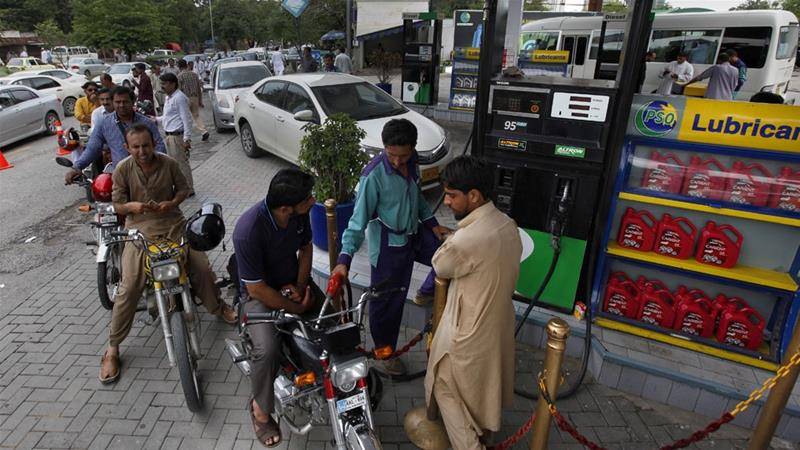
The private sector is becoming increasingly shy in the face of a slowing economy, rising cost of machinery and higher interest rates, said Dr Hafiz A Pasha in an article published by Business Recorder.
Talking about the contraction in private sector credit from the banking system, he said some of this is seasonal in nature. However, the decline up to August 2, 2019 was Rs 135 billion, three times the fall in the corresponding period of last year.
In fact, in 2018-19 the credit off-take by the private sector fell by over 10 per cent.
Expressing his concerns over the economic statistics recently by the FBS and the SBP, Pasha described the increase in central government debt as “extremely disconcerting” and “perhaps unbelievable”. He was talking about the exponential growth in debt in 2018-19 which currently stands at Rs 31,784 billion on this date with the absolute of staggering Rs 7,572 billion.
The government debt as a per cent of the GDP has gone up in one year from 70 to 82 per cent, with a result that the budget deficit has gone up to Rs 4,630 billion in 2018-19 as compared to the target of Rs 1,970 billion.
And then there is low growth in FBR revenues which won’t be more than 10 per cent.
Meanwhile, the inflation rate stood at 14 per cent in the beginning of June but has now jumped up to over 19 per cent by mid-August.
And all of this is accompanied by the persistent fall in industrial production and nine out of the 15 industry groups have registered negative growth, not to mention the decrease in foreign direct investment.
As far as the balance of payments is concerned, the overall financial account has worsened by 15 per cent in 2018-19 despite substantial deposits of over $5 billion by Arab countries with the SBP. “In fact, in June 2019, there was a negative inflow. The disbursement was $997 million, while the amortization was higher at $1,036 million.”
On the other hand, July 2019 has witnessed a low growth in home remittances at 3 per cent only, with decline in inflows from other GCC and EU countries. Earlier, the year, 2018-19 had witnessed buoyancy in home remittances with a growth rate above 10 per cent.
“Another finding relates to the newly computed Real Effective Exchange Rate (REER) Index by the SBP and released recently. The new index has updated the base year, included more currencies and revised the trade weights. According to this index, the REER has been falling steadily since May 2017, reaching a low of 90.5 in June 2019. This implies that the rupee is now actually undervalued by almost 10 per cent. The earlier index had a value of close to 100 in June 2019. Apparently, the time has come to prevent further depreciation in the value of the rupee.”
Talking about the contraction in private sector credit from the banking system, he said some of this is seasonal in nature. However, the decline up to August 2, 2019 was Rs 135 billion, three times the fall in the corresponding period of last year.
In fact, in 2018-19 the credit off-take by the private sector fell by over 10 per cent.
Expressing his concerns over the economic statistics recently by the FBS and the SBP, Pasha described the increase in central government debt as “extremely disconcerting” and “perhaps unbelievable”. He was talking about the exponential growth in debt in 2018-19 which currently stands at Rs 31,784 billion on this date with the absolute of staggering Rs 7,572 billion.
The government debt as a per cent of the GDP has gone up in one year from 70 to 82 per cent, with a result that the budget deficit has gone up to Rs 4,630 billion in 2018-19 as compared to the target of Rs 1,970 billion.
And then there is low growth in FBR revenues which won’t be more than 10 per cent.
Meanwhile, the inflation rate stood at 14 per cent in the beginning of June but has now jumped up to over 19 per cent by mid-August.
And all of this is accompanied by the persistent fall in industrial production and nine out of the 15 industry groups have registered negative growth, not to mention the decrease in foreign direct investment.
As far as the balance of payments is concerned, the overall financial account has worsened by 15 per cent in 2018-19 despite substantial deposits of over $5 billion by Arab countries with the SBP. “In fact, in June 2019, there was a negative inflow. The disbursement was $997 million, while the amortization was higher at $1,036 million.”
On the other hand, July 2019 has witnessed a low growth in home remittances at 3 per cent only, with decline in inflows from other GCC and EU countries. Earlier, the year, 2018-19 had witnessed buoyancy in home remittances with a growth rate above 10 per cent.
“Another finding relates to the newly computed Real Effective Exchange Rate (REER) Index by the SBP and released recently. The new index has updated the base year, included more currencies and revised the trade weights. According to this index, the REER has been falling steadily since May 2017, reaching a low of 90.5 in June 2019. This implies that the rupee is now actually undervalued by almost 10 per cent. The earlier index had a value of close to 100 in June 2019. Apparently, the time has come to prevent further depreciation in the value of the rupee.”
